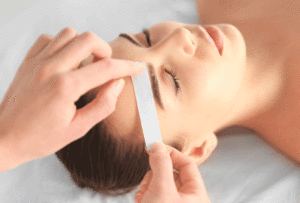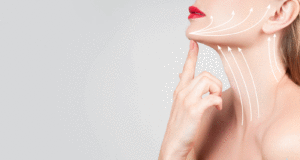Hair Removal Guide: Is Waxing Your Best Option?
Waxing, a semi-permanent method for removing hair from the root, has become increasingly popular due to its long-lasting results, which typically last between three to six weeks. The duration depends on individual factors like body type, location of application, and frequency of waxing sessions. Almost every part of the body where unwanted hair exists can be treated with waxing. From arms, back, and abdomen to more delicate areas like the bikini line, eyebrows, face, legs, and even feet—waxing offers versatility. However, it's crucial to have this procedure performed by professionals in salons to prevent potential complications or damage to the skin, which could lead to scarring or discomfort. Waxing comes in various forms, including body waxing, bikini waxing, Brazilian waxing, and eyebrow shaping. Each serves specific needs and preferences among users. While many wonder if waxing can permanently eliminate hair, the truth lies somewhere in between. Some individuals possess thicker, stronger hair that grows quickly, causing them to experience regrowth within just two weeks post-waxing. These outcomes often stem from internal factors such as genetics and hormone levels; external interventions cannot significantly alter these tendencies. Nevertheless, consistent and correct waxing practices over time can lead to weaker, slower-growing hair after five or six sessions. For those whose natural hair texture is already fine or weak, frequent waxing may result in reduced hair density and extended periods between growth cycles. With prolonged regular treatment spanning several years, some might notice complete cessation of hair growth in certain regions. Why choose waxing over other methods of hair removal? Waxing boasts numerous benefits that make it appealing to both men and women seeking smoother skin for extended durations. Firstly, unlike shaving or using creams, waxing provides longer-lasting results. Once completed, you won't need immediate follow-up treatments unless desired. Additionally, the skin retains its silky smoothness far longer compared to alternatives like depilatory sprays or razors. Repeated waxing sessions contribute to thinner and finer-looking hair growth over time. Over years, this transformation becomes noticeable, enhancing overall aesthetics without requiring constant maintenance. Despite its advantages, waxing isn't without drawbacks. One major concern is associated with pain during the process since hair is pulled directly out from beneath the skin level. While this sensation is intense initially, it fades gradually with practice. Sensitive areas like the bikini zone tend to feel sharper upon removal compared to less tender spots on the body. Over time, as hair becomes finer and less dense, the intensity of discomfort diminishes significantly. Another downside involves financial considerations; professional salon visits can be expensive depending on geographic location. Alternatively, DIY kits exist for budget-conscious consumers but lack precision around sensitive zones like the groin area due to heightened sensitivity there. Improper application using at-home kits risks incorrect directional pulling leading to uneven regrowth patterns including ingrown hairs. To mitigate these issues, regular exfoliation combined with essential oils like tea tree oil proves beneficial. Such proactive measures help minimize adverse reactions while improving comfort throughout the procedure. In individuals prone to hypersensitivity, initial waxing attempts occasionally trigger minor bleeding lasting mere seconds, temporary red bumps fading within a day, and occasional ingrowns diminishing with habitual waxing routines. A helpful tip: maintaining proper skincare habits alongside strategic product usage ensures smoother experiences moving forward. To enrich our discussion further, let us address additional queries frequently posed by clients: Facial waxing represents an excellent solution for those experiencing excessive facial hair attributed to hormonal fluctuations when alternative solutions fail or laser therapy falls beyond reach financially. Contrary to common misconceptions, facial waxing does not induce premature aging signs such as sagging or wrinkling. No, waxing doesn't promote thicker hair regrowth. Repeated waxing actually leads to diminished hair volume and slower development cycles provided adherence to scheduled intervals (every four weeks). Consistency plays a key role here. Between creams and wax, waxing consistently emerges superior unless hypersensitivity renders it unsuitable under medical advisement. In such cases, shaving or topical creams remain viable options. Although initially uncomfortable, waxing surpasses shaving regarding pubic hair care due to prolonged smoothness retention and reduced risk of ingrowns associated with blade-based approaches. Hook Lock,Device Red Hook Lock,Security Hook Lock,Anti-Theft Peg Hook Lock Wenzhou Boshine Electronic Security Co. Ltd , https://www.boshine.comUnderstanding the Waxing Process

Can Waxing Lead to Permanent Hair Removal?
Advantages of Waxing
Disadvantages of Waxing


Is Facial Waxing Advisable?
Does Waxing Cause Hair to Grow Back Thicker?
Creams vs. Wax: Which Should You Opt For?
Which Method Reigns Supreme for Pubic Hair Management?